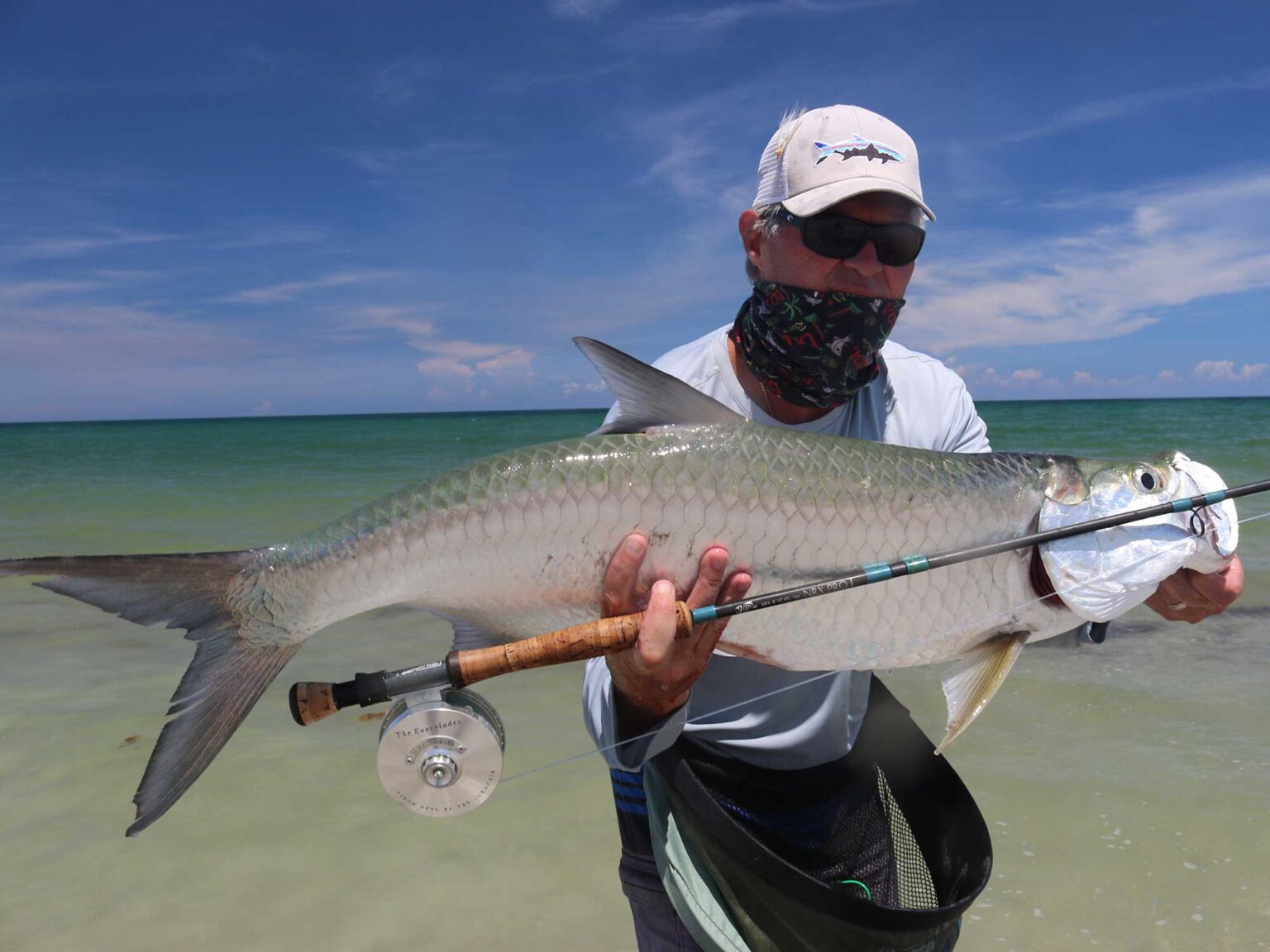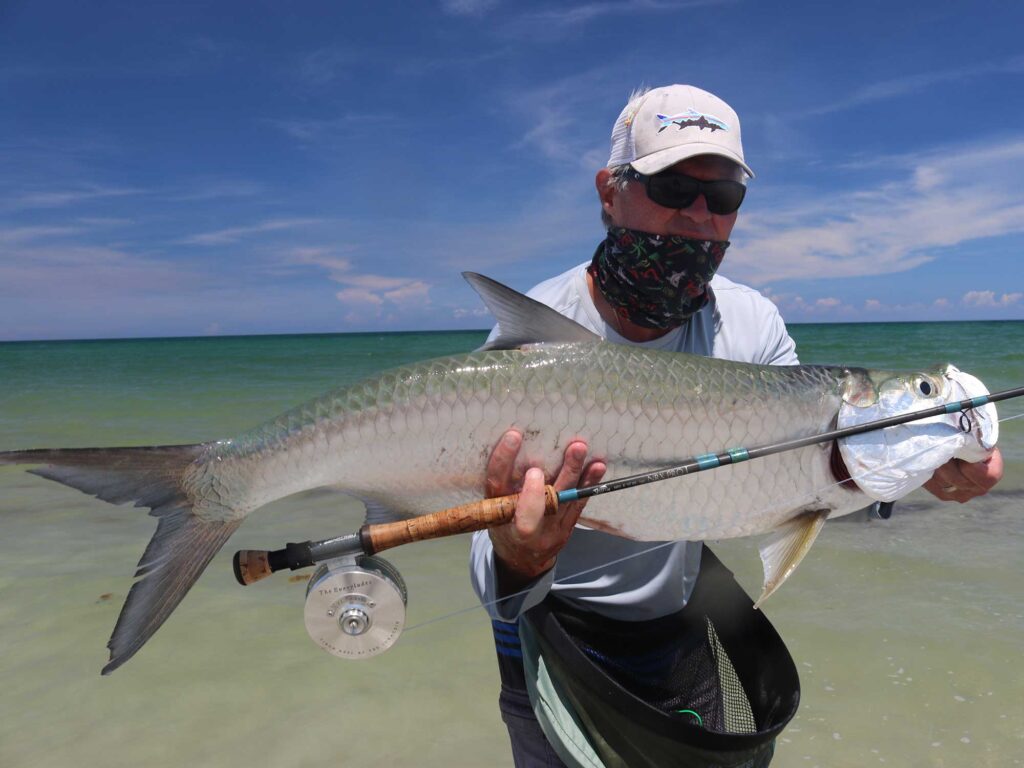
The author holds a small tarpon caught on a fly during a late-September migration of southward-moving baitfish.
Mike Conner
Florida’s top saltwater anglers understand how to track fish movements. A spot that is lively one day may be empty the next as fish migrate. With the arrival of autumn, migratory instincts kick in, leading to different behaviors among Florida species; cooler water can cause them to spread along the coast or venture offshore. This involves both resident fish and species that are highly migratory.
Residents like spotted seatrout, redfish, and snook typically remain nearby. In contrast, beach species such as pompano, Spanish mackerel, and bluefish are long-distance travelers from northern waters, following their preferred temperature ranges into Florida as fall sets in. Surf casters will affirm that these three species are present year-round in limited quantities within Florida waters.
Water temperature primarily influences these fish movements. In addition to temperature, the availability of forage—which relates to salinity and habitat changes—also affects when and where fish migrate.
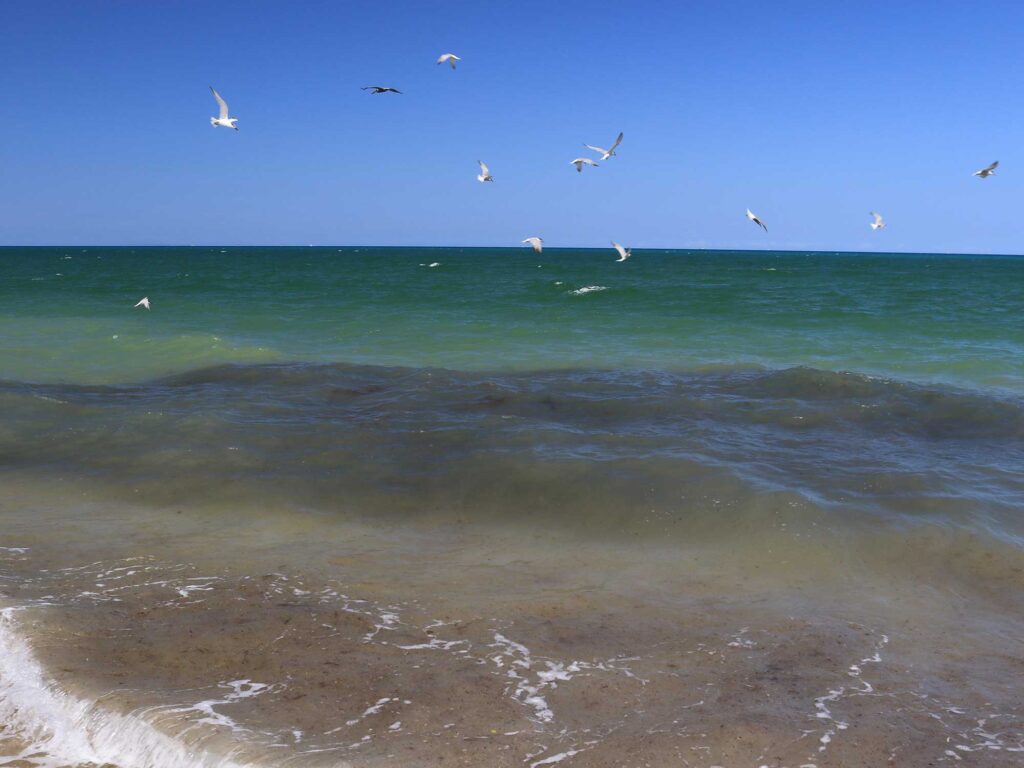
The fall bait run kicks off in September with juvenile anchovies, and you can spot tarpon, jacks, and snook heading south most days. Just watch for the birds!
Mike Conner
When Gamefish Transition from Open Waters to Backwaters
Years ago, I discovered how seasonal shifts impacted fish in the Ten Thousand Islands region on Florida’s Gulf Coast. I became familiar enough with the geography to distinguish between “inside” and “outside” waters. The “inside” represented areas from approximately halfway between the Gulf of Mexico and the mainland rivers that extend into the Everglades’ freshwater regions, while “outside” referred to everything beyond that line into the open Gulf.
My preferred grass flats on the Gulf side during spring and summer lost their speckled inhabitants by late December due to frequent cold fronts. I managed to find concentrated schools around the oyster bars in the inside bays. Harsh cold snaps in January pushed them into the saline, mangrove-lined creeks and rivers of the mainland.
The same pattern applied to red drum and snook. During September and October, both species were abundant around the outer islands and oyster bars near the Gulf. However, as temperatures dropped, they relocated deep into the backcountry. They typically remain there until April unless winter temperatures are unusually mild. Those movements, although short, are clearly noticeable.
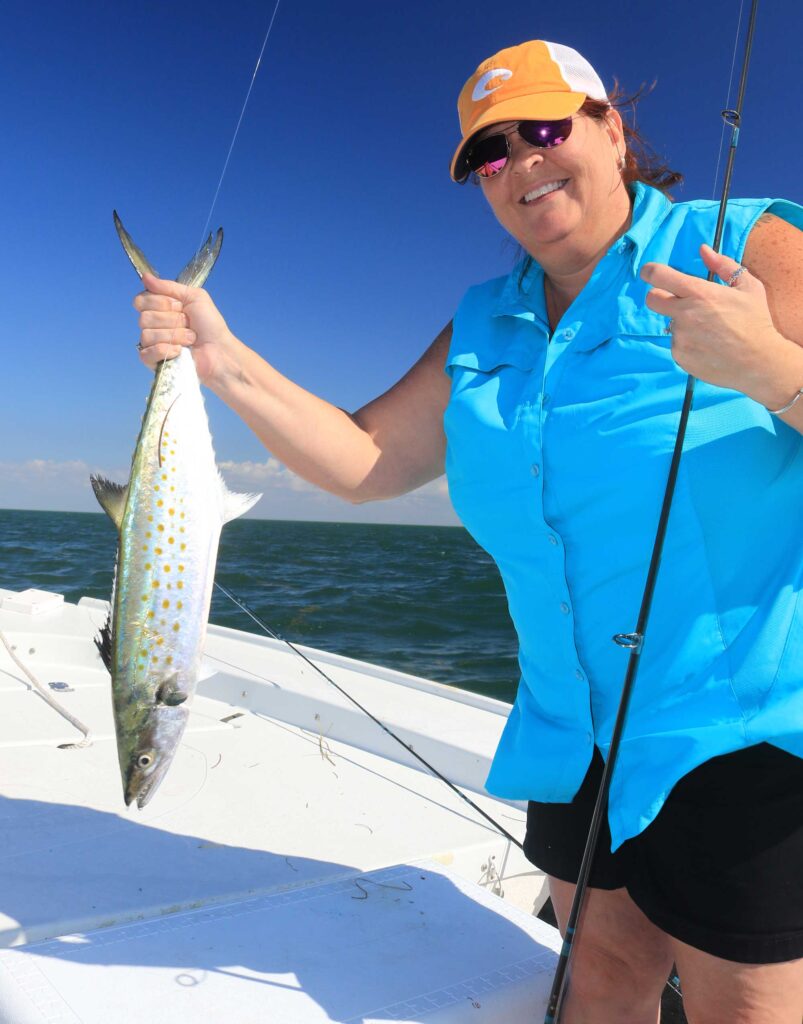
This Florida Bay Spanish mackerel is representative of the fish migrating into the bay by November, as water temperatures drop along the Gulf coast of central to northern Florida.
Mike Conner
Shifting from Flats to Offshore Waters
Florida Bay arguably has the finest summertime inshore mangrove snapper fishery in the state, primarily over grassy areas 5 to 8 feet deep. The peak season occurs in late summer, but by November, most legal-size fish migrate to deeper waters in both the Gulf and the nearshore Atlantic reefs off the Keys. Their absence is soon filled by large schools of Spanish mackerel, cobia, and pompano migrating from northern waters. These species remain until May when they head north, allowing snapper to return.
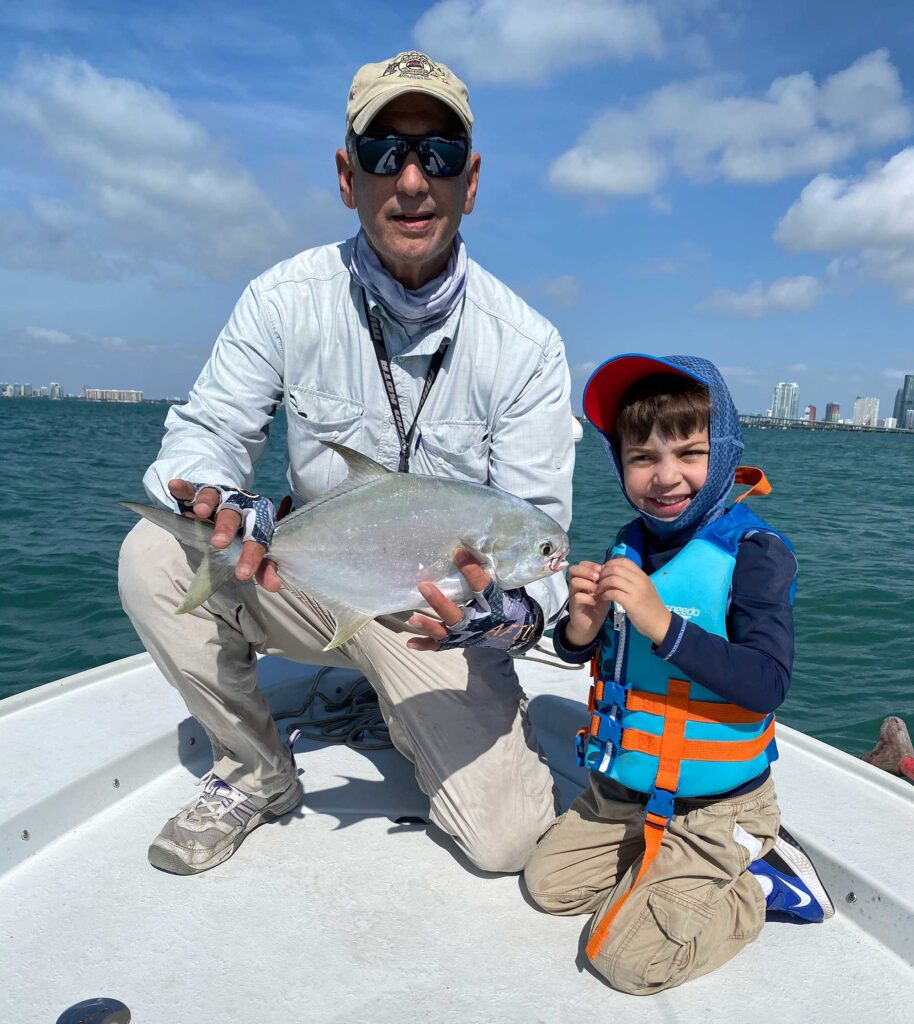
How far will Florida pompano migrate in mid-winter? Here’s a fish taken in January in Miami’s Biscayne Bay.
Mike Conner
Gamefish Migrate South for Winter
Pompano—officially known as Florida pompano—are highly responsive to temperature changes. I pursue them both from the surf using bait and rods as well as with fly gear when they enter the Indian River Lagoon. By January, it is likely that water temperatures from Hobe Sound northwards will dip below 63 degrees Fahrenheit, prompting them to move south in large numbers.
Although the past few years have been mild, I recall seasons when the pompano disappeared from their usual areas, prompting me to search waters as far south as West Palm Beach, where I found the beaches teeming with them. A 5-degree difference in water temperature was crucial.
Biscayne Bay bonefish exemplify migrating fish behavior. The autumn water temperatures are favorable, so October and November see plenty of active fish on the flats—both in mainland and oceanfront areas. However, a cold spell from December to February drives them primarily to the Atlantic oceanfront flats or into deeper waters near patch reefs.
Insider Tip: Bonefish are known to school in the hundreds and head south to the Keys seeking the warmest available water.

Once late-fall temperatures drop sharply along the Southeast Atlantic coastal waters, pompano migrate south into the Florida surf.
Mike Conner
Has Climate Change Caused Fish Ranges to Expand?
Florida anglers continuously report catching saltwater species further north than their usual habitats, with recent sightings of several tarpon as far north as Maryland’s northern Chesapeake Bay. Historically, there have been occasional sightings, but the numbers observed this summer are remarkable. Warming waters in the Atlantic make this possible, and many biologists and anglers suspect that climate change is the driving force. This behavior is strictly migratory—tarpon must return south as winter sets in, or face mortality.
Florida snook are gradually moving north into the Florida Big Bend area. Typically, snook were found up to Tarpon Springs on the Gulf Coast, but by 2020 they were reported in the Suwannee River, 80 miles further north. Since then, state wildlife officials have received reports of these sought-after fish in the Florida Panhandle. The term “neo-native” describes snook as they expand into nearby regions due to climate changes, such as fewer severe winter freezes.
Like tarpon, snook cannot survive extended periods of cold temperatures. In fact, water below 50 degrees can be lethal to snook after just a few days. It raises the question of whether any snook in the Florida Panhandle have endured a winter. In 2018, a slight cold snap resulted in a snook die-off around Crystal River, where snook had not been present in prior years. Three nights of freezing temperatures caused substantial mortality.
Moreover, the peacock bass, a tropical species originally introduced to South Florida’s canals and lakes to manage invasive populations, now thrives in waterways extending as far as Boynton Beach. Originally, its northern range was in northern Palm Beach County, with the largest populations in Dade and Broward counties on the east coast, and primarily in the Everglades as well as Collier and Lee counties on the Gulf side.
Peacock bass cannot tolerate water temperatures below 60 degrees but have survived cold events in some of the deeper canals. Given the recent trend of warm winters without harsh freezes south of Orlando, predictions about the northern reach of peacock bass remain uncertain.

